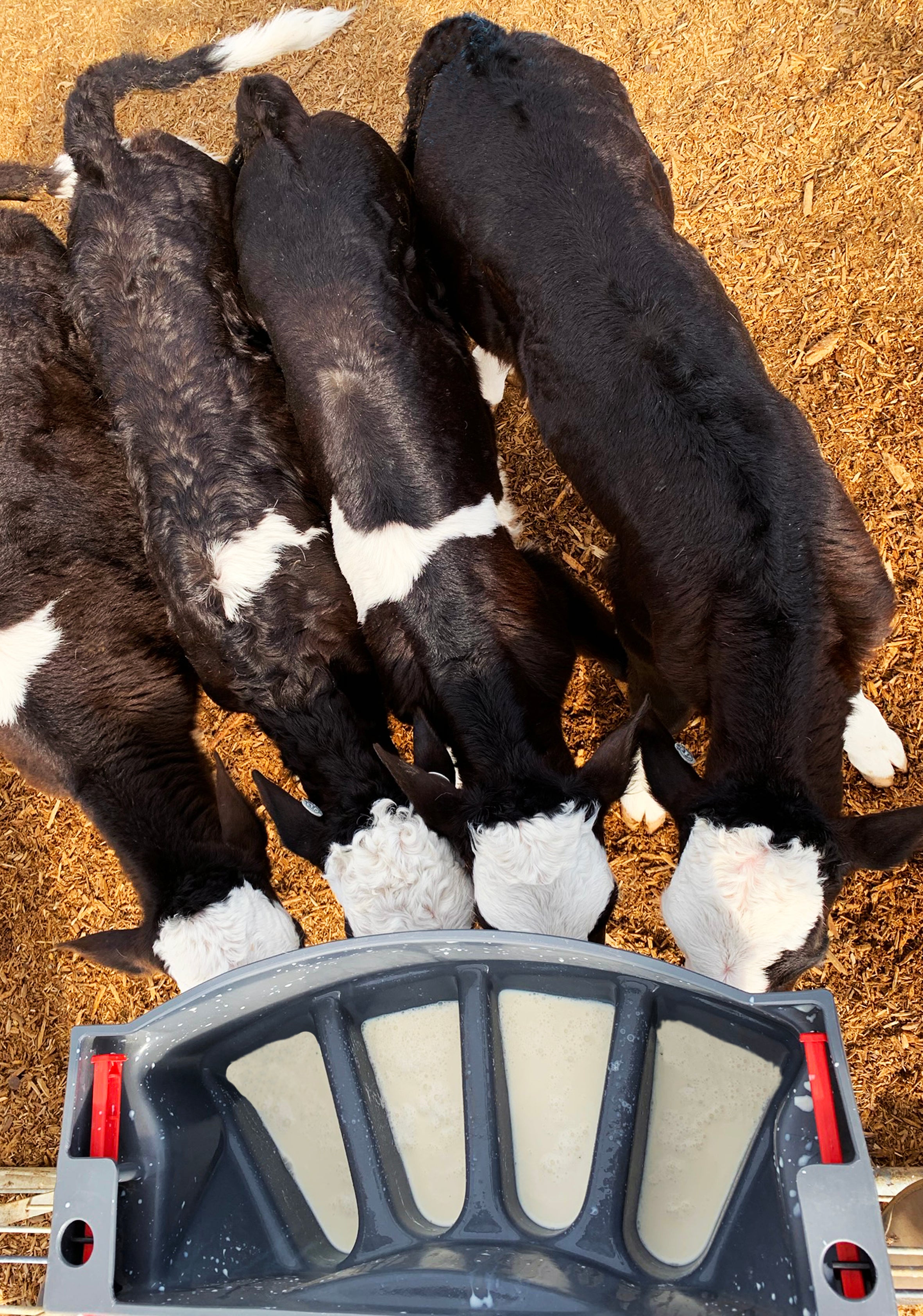Calves need milk. More milk than they often get. There are lots of regimes being promoted so it’s hard to know what the right amount is, however, if you work on the rough rule of a minimum of 12.5% of bodyweight in temperate climates, you can’t go too far wrong.
A 60kg calves needs around 7.5L per day so ideally use scales or a weigh tape to make sure calves are getting enough milk. If you have a mixed weight group, scale up rather than down. This makes sure the bigger calves have enough, the smaller calves will just have better daily gains!
Don’t worry, the controlled flow of the Milk Bar™ Teat prevents nutritional diarrhoea if some calves get more volume than they need.
It’s worth feeding a little bit more than not quite enough to get better Average Daily Gain (ADG).
Good ADG has positive outcomes such as better conception rates and increased first lactation milk production.
Week 1-3: All energy comes from colostrum or milk. A calf takes no energy from grain during the first few weeks, so it is important to feed enough milk to meet all energy needs. Starter ration in the diet is important from week one to start rumen development.
Week 4: Now the rumen is starting to develop. Small amounts of energy are taken from ration, but the majority of energy is still from milk.
Week 6: By the end of the week six (42 days) the rumen should be developed enough for milk to be reduced. If the calf is eating 700 grams of starter ration per day, then the milk volume can start to be reduced.
Week 12: The rumen should now be developed enough for the calf to continue to grow on pasture, pasture-based feeds or grain-based feeds depending on your feeding regime.
Weaning
To prevent weight loss at weaning it is important the calf has had ad lib starter ration from Week 1. When the calf is eating 700gms of starter ration the milk can start to be reduced and be fed once a day. Providing the calf is consuming a minimum of 1kg of grain or has doubled its birth weight it can be weaned from 8 weeks.
Do not go to once a day feeding under 42 days. Ideally calves on once a day milk feeding should be fed in the evening. The calf will then sleep on a full stomach but will be hungry during the day. With ad lib concentrate available they will consume more to accelerate rumen development.
Don’t forget! In cold weather you need to increase the volume by 2% every degree under 5°C. So if the milk volume is 7.5 L:
At 4°C increase 2% = 7.6 L
At 0°C increase 10% = 8.25 L
At -5°C increase 20% = 9.0 L
To work out volumes for best results, then knowing the energy value is important. A 40kg calf requires 6.8 MJME per day for maintenance in fair conditions and will require more energy in cold, draughty, or damp conditions.
Calves need 11.4 MJME (Mega Joules of Metabolisable Energy) to gain 1 kg of live weight.
Example: For a 40kg calf to gain 0.8kg per day it requires a minimum of 15.9 MJME (6.8 for maintenance plus 80% of 11.4 MJME to gain .8kg). This equates to 5.3 litres of whole milk.
Available MJME (approximate) per product:










